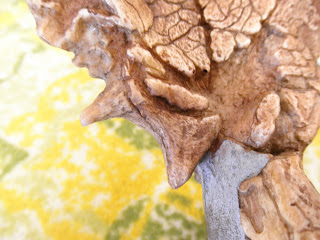
Look closely at the area right above the canines, there is a thickening that runs up the face. These are the anterior pillars.
So for some god-awful reason, our type specimen for Au. africanus, is a child, called Taung due to its discovery in a locality named Taung. That's pretty nasty, until you realize that the Taung child has a brain endocast, which allows us to see an imprint of the brain itself. Soft tissue preservation is rare due to the bias in the fossil record, and so this endocast is sort of special.

When you compare the Au. africanus pelvis to that of Au. afarensis, you'll notice that Au. afarensis has a noticeably longer pelvis. Au. africanus seems to be headed more toward the short and broad side of things here, which seems to show that the pelvis is becoming even more suited toward long term bipedal locomotion.

And if you take a look at the acetabulum, you'll notice that Au. africanus has a more complete and closed in acetabulum. It's still quite shallow, but is markedly more closed in than in Lucy's kind.

Another interesting feature on these guys is the fact that they begin to show some pretty large teeth. Large teeth become the focal point later on with the robust australopithecines and it seems like we're just getting closer and closer to crazy teeth. As the resources changed with the environment becoming cooler, drier, and more seasonal, obviously they needed to deal with the way they processed foods that were no longer squishy. Enter.... big teeth!












